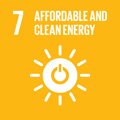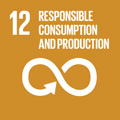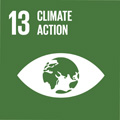- Docente: Giovanni Semprini
- Credits: 6
- SSD: ING-IND/11
- Language: Italian
- Teaching Mode: Traditional lectures
- Campus: Bologna
-
Corso:
Second cycle degree programme (LM) in
Civil Engineering (cod. 0930)
Also valid for Single cycle degree programme (LMCU) in Architecture and Building Engineering (cod. 0940)
Learning outcomes
the achievement of credits allows to acquire the essential tools to understand and locate the thermo-mechanical plant equipment (heating, ventilation and air conditioning) of a building and in the general of a civil work.
Course contents
The course deals with the various aspects of the
HVAC systems in buildings with particular
attention to: thermal comfort , interaction between
building-plant-external environment , aspects of energy saving
and the use of renewable energy sources according to current national legislation. Starting from the basics of Technical Physics
and Hydraulics (preparatory courses), this course discusses the key issues
related to the design of heating and air-conditioning systems,
and of production of hot water for sanitary purposes. At the end of
the course the student will have a base knowledge to evaluate
different choices for HVAC systems and identify
strategies for energy saving.
A) Thermal Loads and Comfort conditions: thermophysical properties of building
components (thermal transmittance, thermal bridges, thermal
inertia, solar transmission). Basic concepts on Thermal Comfort:
subjective and objective indices. Energy balance of the
building-plant system. Calculation of winter thermal loads.
B) Heating Plants: Heat generators. Piping systems . Safety
and control equipment. Chimneys. Radiators, convectors, radiant
systems. Thermal power stations. Criteria for the selection and
sizing of a heating system. Global energy efficiency.
C) Air-conditioning systems - Winter
and summer air conditioning. Air handling units. Systematic
classification schemes and realization. Criteria for the selection
and sizing of Air handling units and air ducts. Air quality and
filtration systems. Air diffusers and selection criteria. Acoustics and noise problems.
D) Chillers and heat pumps. Basis on the operation of the machines,
Types, energy design criteria.
E) Regulatory aspects for energy savings and technical solutions
for improving energy efficiency and use of renewable energy
sources. Energy certification . Solutions for energy savings and
use of renewable sources: solar thermal, photovoltaic, biomass.
Teaching methods
The lectures will provide the basis for the design of air conditioning systems
The Heating Plant can be carried out in groups of max 2 people. It must be done during the lecture period and reviews will be made in the classroom with explanations to all students
Course attendance is essential to gain practical knowledge on HVAC design
Assessment methods
The final assessment is done through a final exam that ensures the acquisition of knowledge and skills expected by the presentation of a project of an heating system, followed by an oral test.
To be eligible to take the oral exam the student must submit the heating system project technical report
The oral exam will focus on the general program of the course
Teaching tools
Slides of the lectures
free tools for thermal calculation
Office hours
See the website of Giovanni Semprini
SDGs




This teaching activity contributes to the achievement of the Sustainable Development Goals of the UN 2030 Agenda.
